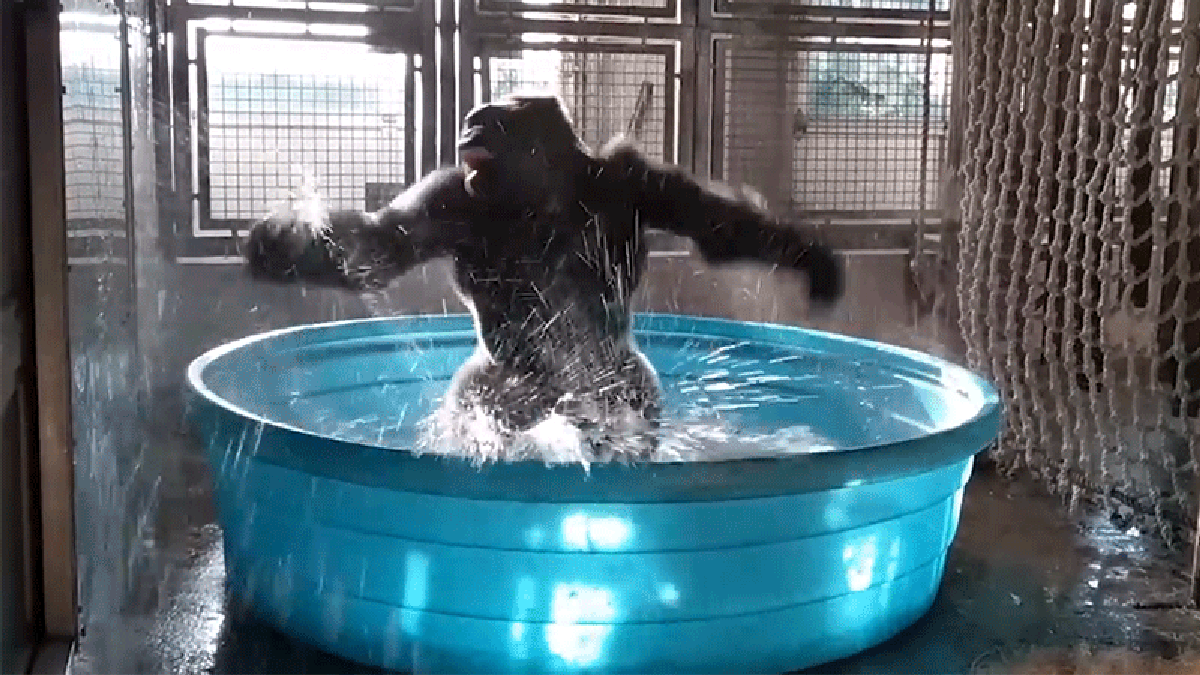Great Apes Caught Spinning Themselves Just to Get Dizzy

Researchers studied videos of great apes spinning and found that the animals are deliberately getting dizzy; the team believes that the behavior may have implications for humankind’s occasional exploration of altered states of mind.
Evidence collected from hundreds of instances of rope spinning across several great ape species demonstrated that, in some instances, the animals sought to induce dizziness. The researchers compare the behavior to spinning to induce mind-altering experiences in humans, like Sufi whirling. The research is published in the journal Primates.
“Spinning alters our state of consciousness, it messes up with our body-mind responsiveness and coordination, which make us feel sick, lightheaded, and even elated as in the case on children playing in merry-go-rounds, spinner-wheels, and carousels,” said Adriano Lameria, a psychologist at the University of Warwick and co-author of the paper, in a University of Birmingham release.
The team’s interest was piqued by a viral video of a gorilla named Zola spinning in a pool, shared by the Dallas Zoo in 2018.
“What we wanted to try to understand through this study is whether spinning can be studied as a primordial behavior that human ancestors would have been able to autonomously engage in and tap into other states of consciousness,” Lameria added.
G/O Media may get a commission
The researchers studied 40 videos that included footage of rope spinning, totalling 709 revolutions. Gorillas, chimpanzees, orangutans, and bonobos all spun. The average spin session was 5.4 revolutions, and the average rotational velocity was 1.43 spins per second. The longest session lasted 28 revolutions, and the fastest single spin was 5 revolutions in a second (I’m getting dizzy just writing all this).
An important takeaway is that the apes spin fast enough to induce what the researchers call “psychological ‘highs’” in humankind. “Ancestral individuals, irrespective of whether they had access to psychotropic drugs, may have had the ability to self-induce altered states of proprioception and awareness by spinning,” the team wrote.
There’s copious evidence of human drug use in the ancient past. From ritualistic cannabis use in the Levant 2,700 years ago to cocaine and ayahuasca use in Bolivia 1,000 years ago, we have long used substances to change our state of mind. Some empires were built on drugs, well before Pablo Escobar’s cocaine hippos. (Gizmodo once asked a bunch of historians about the first substance to be used recreationally, with some surprising results.)
Besides the great apes reported in the paper, the team found videos of gibbons and monkeys spinning in similar ways. Further research—especially on humans—could help reveal what psychological benefits all this intentional dizziness might provide.
More: Zoo Says Ape’s Mysterious Pregnancy Occurred Through a Glory Hole
Source link





